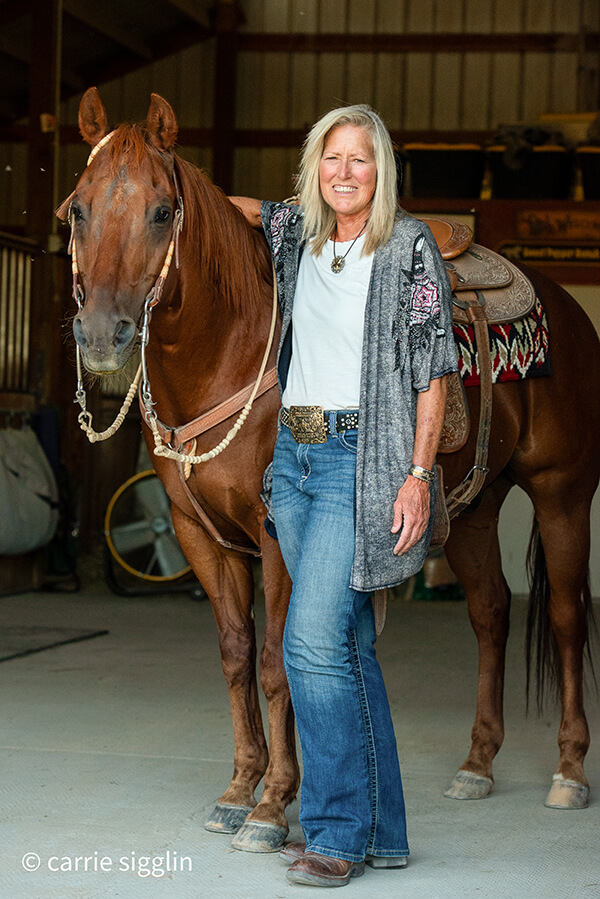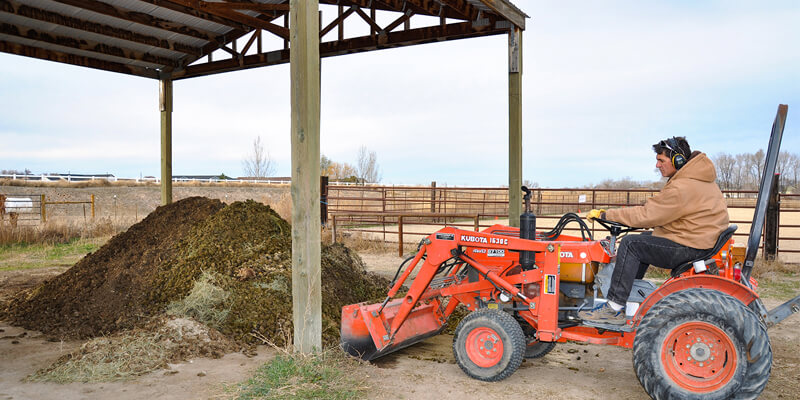Correctly Managing Manure Doesn’t Need to be Difficult or Expensive
There are many reasons why a mismanaged manure pile is a problem—from chore inefficiency to horse health issues (horses allowed to graze near their own manure are quickly reinfested by larva that hatch from worm eggs shed in manure), to odor and fly problems. Plus, runoff from soggy manure piles can cause water quality issues for creeks and wetlands as well as for drinking water—a serious concern if you have your own well. Many areas have ordinances in place that strictly control all these issues.
6 Quick Tips for Composting Horse Manure
Create 3 piles – Begin by piling the daily manure and stall waste in one pile. Before that pile is too large (but at least as big as a washing machine) leave it and start building a second pile. Once that one is as big as you’d like it, leave it and start the third and last pile. In two to four months the first pile should be done composting and you can start using the compost from that pile.
Cover your piles – This can be done with a tarp, plastic sheet, or a roof. A cover prevents your piles from becoming a soggy mess in the winter and too dried out in the summer. Covering also prevents the nutrients you’re saving for the garden from being washed out and creating pollution problems.
Aeration – Turning the compost-to-be allows oxygen to get to the bacteria and organisms that break down manure and stall waste into dirt-like structures. This keeps the process aerobic and “earthy” smelling. Anaerobic compost, without air, will have a foul, undesirable odor. How often you turn it determines how quickly your compost will be ready to use.
Unless you have access to a small tractor or enjoy a good workout, turning the pile by hand can be difficult. Air will permeate through the pile to a depth of about two feet. An easy way to get air to the center and avoid hand-turning is to insert a couple of five-foot PVC pipes into the center of the pile. Use a drill to put holes along pipes. The pile will still need to be turned occasionally to get the manure on the outside into the center so the heat from the composting process can kill parasites and weeds.
Water – Your compost material should be about as damp as a wrung-out sponge. In the summer, water your compost with a garden hose when you turn it. Another easy way to add water is just to hose down the manure and stall waste in your wheelbarrow before you dump into the pile.
Finished compost – If you follow these guidelines your compost could be ready in two to four months depending how often you turn it and whether it stays damp. It may take a little longer in the winter when microbes are less active. You will know when your compost is ready when the material looks dark, evenly textured, and crumbly like dirt and no longer looks like the original material.
Uses for compost – Compost is a rich soil enhancement that improves the health of both plants and soil and helps to retain moisture. Spread compost in pastures during the growing season in thin layers, no more than ½ inch thick, three to four times per season. It can be also added to the soil of houseplants, gardens, lawns, or flowerbeds—or shared with horseless neighbors.
For questions or help with this topic, contact Horses for Clean Water, your local conservation district, or the Natural Resources Conservation Service.
Check out the Horses for Clean Water website for information on upcoming events, online classes, private consultations, tip sheets, and other resources for horse keeping and land management. Visit the Sweet Pepper Ranch website for info on our horse motel or glamping tent.
See this article in the November/December 2022 online edition:
Nov/Dec 2022

Alayne Blickle began in the 1990’s as a pioneer in water conservation and natural resources conservation by creating the entrepreneurial consulting business, Horses for Clean Water, an award-winning internationally acclaimed education program that looks for horse-healthy, nature-based solutions to land management challenges. She continues this work today partnering with agencies, organizations, and horse owners throughout North America and worldwide. She is a regularly contributing writer and photojournalist to several equine publications.
Alayne lives with her horse trainer husband, Matt Livengood, in southwestern Idaho where they raise and train AQHA horses and mustangs on their eco-friendly horse ranch. Contact her through the Horses for Clean Water website or through their ranch website Sweet Pepper Ranch.
For more information contact Alayne at [email protected] or 206-909-0225.






